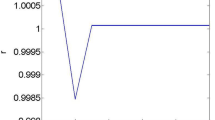Abstract
The research summarized in this paper is part of a multi-year effort focused on evaluating the viability of wavelet bases for the solution of partial differential equations. The primary objective for this work has been to establish a foundation for hierarchical/wavelet simulation methods based upon numerical performance, computational efficiency, and the ability to exploit the hierarchical adaptive nature of wavelets. This work has demonstrated that hierarchical bases can be effective for problems with a dominant elliptic character. However, the strict enforcement of orthogonality in the usual L 2 sense is less desirable than orthogonality in the energy norm. This conclusion has led to the development of a multi-scale linear finite element based on a hierarchical change-of-basis. This work considers the numerical and computational performance of the hierarchical Schauder basis in a Galerkin context. A unique row-column lumping procedure is developed with multi-scale solution strategies for 1-D and 2-D elliptic partial differential equations.
Similar content being viewed by others
Author information
Authors and Affiliations
Rights and permissions
About this article
Cite this article
Christon, M., Roach, D. The numerical performance of wavelets for PDEs: the multi-scale finite element. Computational Mechanics 25, 230–244 (2000). https://doi.org/10.1007/s004660050472
Issue Date:
DOI: https://doi.org/10.1007/s004660050472




